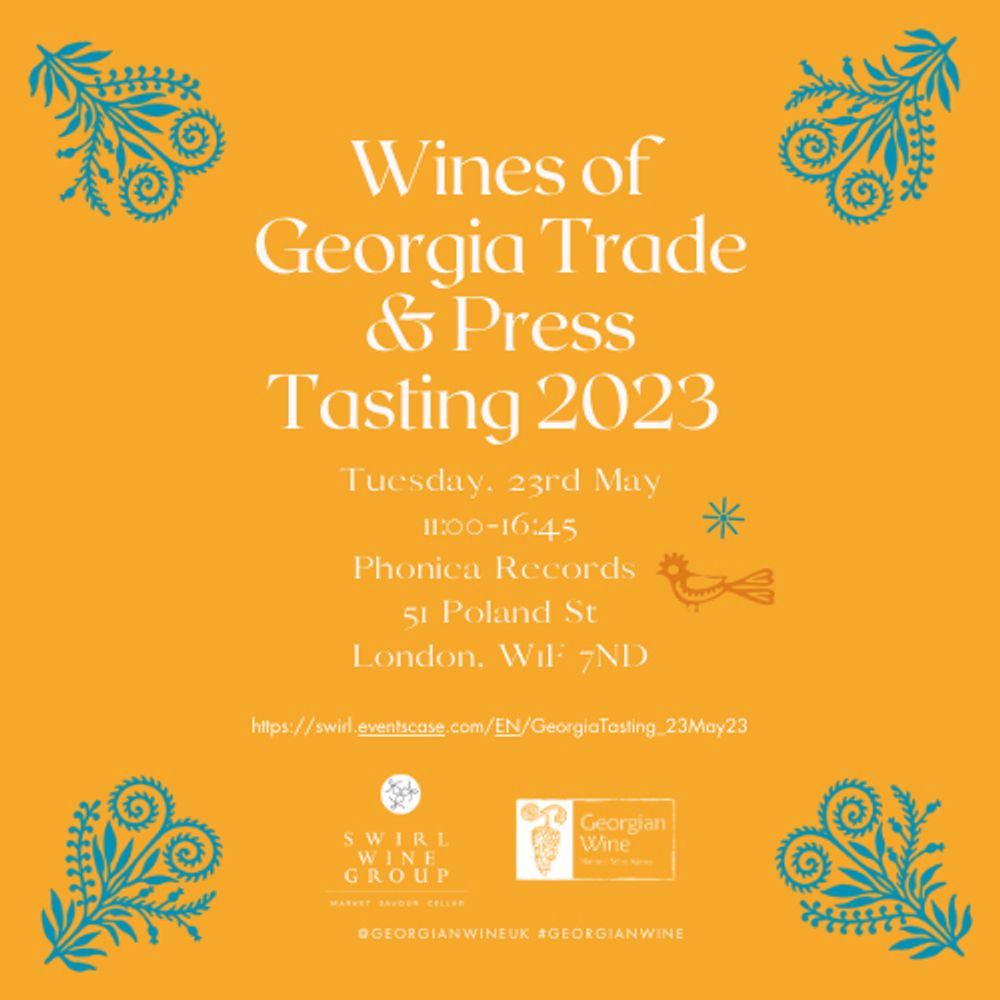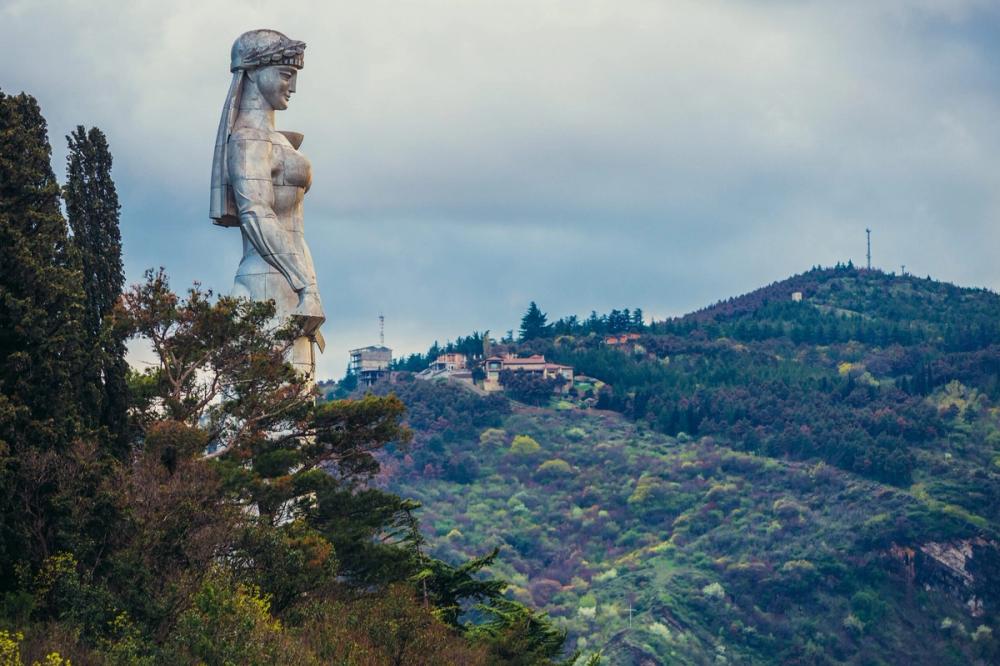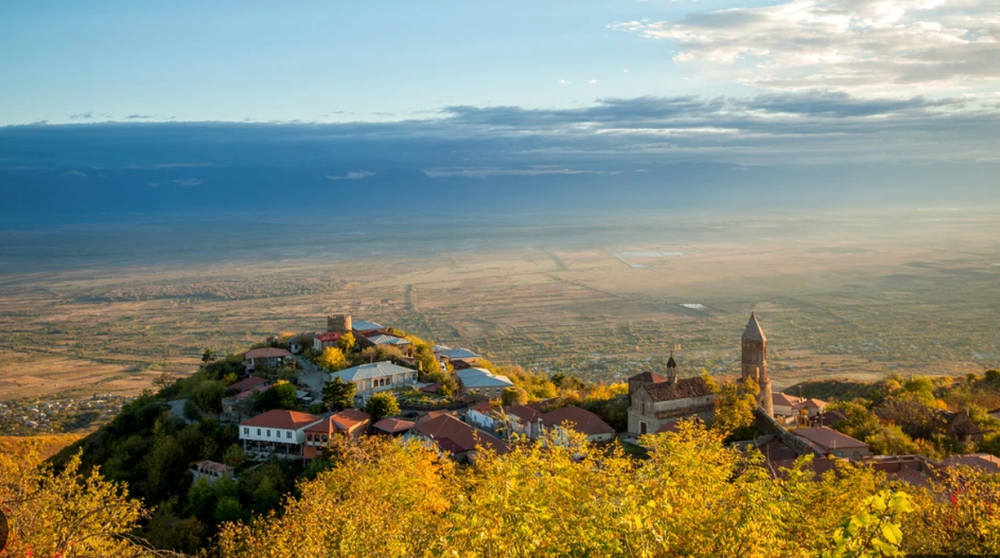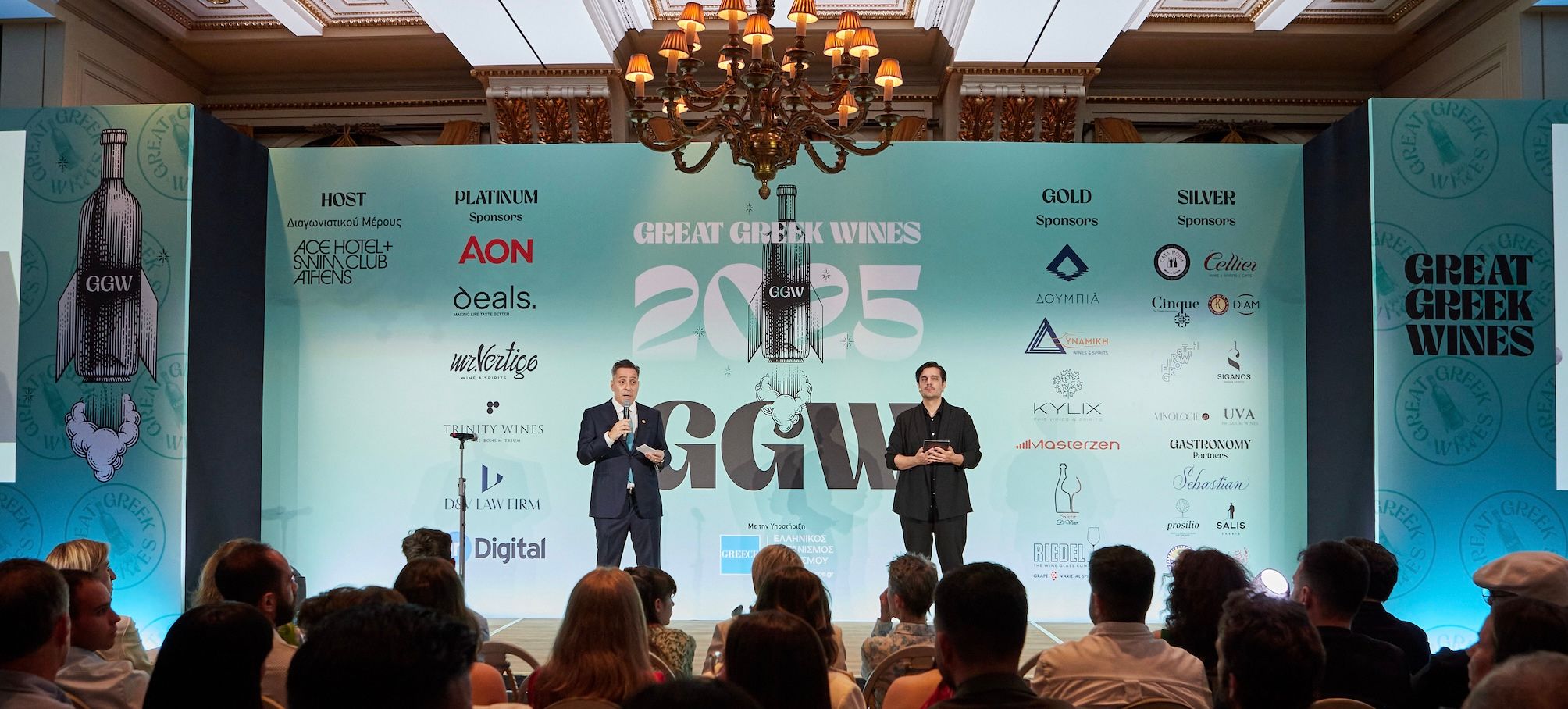Wines from up to 18 Georgian producers are available to taste at this week’s London Wine Fair many with another 266 on show at next week’s Wines of Georgia tasting at London’s Phonica Records in Soho (May 23, 11am to 4.45pm) – click here to register.
You have the Wines of Georgia tasting coming up – what can we expect?
One of the biggest selections yet of Georgian wines to try in London. We have 15 importers attending and pouring their Georgian wines, so if you’re looking for Georgian wines to buy or recommend right now, there’s a large range to choose from. We also have a walk-around discovery tasting of 100 wines from 50 producers looking for UK importers. This part of the tasting is themed by style and we provide producer contact details so it’s a great opportunity for buyers to scope out unsigned talent in their own time. And we have a further section of 24 wines made by women who are members of a new organisation, Georgian Women in Wine. Their tasting is called “Georgian Madams’ Wine” and they have been touring different countries, including Japan and Poland. And now they’re coming to London.

You can expect fresh dry whites, qvevri amber wines in both traditional and contemporary styles, qvevri reds and rosé, and classically made dry reds in both unoaked and oaked versions. The main region – Kakheti – and grape varieties (Saperavi, Rkatsiteli, Kisi) are well represented but we have a more diversity of wines from other regions– such as Imereti, Racha and Kartli – and other grape varieties. It’s a very diverse and exciting range of high quality wines.
Do you have producers coming over?
We have a delegation of 24 Georgian Madams! (In Soho, that’s not lost on us). These are women winemakers, viticulturists and entrepreneurs who are important leaders for women in the wine business in Georgia. Wine culture is even more patriarchal in Georgia than in Europe, and these women are leading in creating great wine and successful businesses in the Georgian wine sector. Their organisation is very young but has already attracted funding from international bodies to support women in business. They include some very famous women enologists and some young emerging talent. And they will all be there!
Are running generic tastings likes this still the best way to show Georgian wines to the trade?
A tasting like this is part of the mix. It’s a relatively efficient way to connect importers and trade buyers and communicators, and to engage UK trade with the incredible dynamism and diversity of Georgian wine. But a one-day tasting in London has its limitations so we also hold virtual masterclasses in May and September, two trade trips in June and September, a Georgian table at SITT Manchester, and an ongoing “Trade Bureau” through which importers can receive samples and introductions to potential producers.
A generic tasting on its own isn’t enough to build a category – you always have a lot of behind the scenes matchmaking and follow up that goes on through the year. That’s why we also run an onoing press office, and host a producer database online so that trade and media can research wines and winemakers of interest. If anyone can’t make this tasting but are curious about exploring Georgian wine, they just have to get in touch, give us their brief, and we will send a selection of samples (with background information) that they can taste at their convenience.
Georgia has enjoyed some strong sales in the UK – can you go through the numbers and where do you think that growth has come from and why?

Georgia has really made its mark in the UK over the last six years in particular
We know that we had very strong growth from 2017 to 2021, when registered exports to the UK increased from circa 70,000 bottles to 700,000 bottles. Currently, we don’t have the updated figures because the NWA has paused publication while they work out how to track accurately. This is because so many UK imports are now coming via European intermediate countries, as producers and shippers find ways around supply chain disruption.
What styles of Georgian wine are doing particularly well and why?
We surveyed existing importers of Georgian wine in the UK, including specialists and the larger agencies, and they all tell us that Saperavi is the star seller. Whether in crunchy fresh, inky qvevri and sumptuous oaky guises. I think it’s because Saperavi is simply delicious. It’s a superhero grape, and retains this vibrant exuberance however it is made. The flavour profile appeals to the UK palate: if you like Syrah or Malbec, you will like Saperavi, it has that plush mouthful character to it. It also helps that it is easy to say, and remember.
Importers tell us that amber wine is also a successful style. It is more niche than red from Saperavi, but Georgia is the spiritual home of amber (or orange) wine and qvevri amber, in particular, is an important contributor to sales by value. I also think that orange wine is becoming less niche. The success of brands such as Cramele Recas and Gerard Bertrand with orange wine is bringing orange wine to a wider audience. And the increasing availability of lighter, more aromatic Georgian amber wines from the cooler western regions helps to broaden their appeal.
Do you think the perception of Georgia is changing in the trade – if so how?
Definitely. When I first spoke to buyers about Georgian wine in 2017, the response was “I can’t risk listing that weird stuff, interesting though I find it to taste”. Now, the awareness of Georgia’s appeal to the UK market is established. Specialist Georgian and specialist natural wine importers did a brilliant job of breaking down the UK door for Georgia and getting listings in the on-trade. Then the national agencies (including Berkmann, Boutinot, Hallgarten and Liberty) started adding Georgia to their portfolios, and that opened the indie retail national wholesale market. And now you have regional wholesalers such as Oxford Wine Company and Wright Wine offering a 10-strong Georgian wine selection.

Georgia has gone from niche and untrusted to being a key part of both regional and national distributor ranges. Picture Miles Willis.
Most recently, we are seeing regional wholesalers import direct from Georgia, such as House of Towned and Gusto Wines. And the Merchant Vintners buying collective has just added Georgian wine to their range. Georgia is still a challenger category, but it’s no longer seen as an intriguing museum piece, or quirky natural wine source, but as an exciting source of appealing, diverse wines with a point of difference. And the incredible commitment of the producers to raising quality and listening to our feedback has played a big part in that.
Is that reaching through to consumers yet?
We don’t have any consumer research but empirically I would say yes. We can get an idea by tracking the visits to and requests from our stockists page on Georgianwine.uk website. Naked Wines went out to source Georgian wine expressly because when they surveyed their consumer base on “where should we look for new wines”, their customers overwhelmingly responded “Georgia”. Ray O’Connor MW at Naked is now offering six wines from Georgia and they have sold well.
Georgia as a country is becoming a little more familiar to us in the UK, thanks to the rugby, tourism and food. And all that helps.
What else do you think needs to happen for the next stage of Georgia’s growth?
We need to continue to support and deepen Georgian wine sales in the UK indies. There are around 200 indies offering at least one Georgian wine now, and we need to get to the point where Indies want to offer half a dozen Georgian wines, and where an Indie feels confident in listing a Georgian wine. This requires supporting the agencies and wholesalers who supply Indies, with familiarisation trips, training, materials. And also informing the producers on what they need to do to help their agents sell successfully.

The culture, traditions and beauty of Georgia is something you have to go to the country to experience, says Sarah Abbott MW
We need every major agency in the UK to think that if they haven’t listed a Georgian producer, they’re missing out on an exciting new trend and a sales opportunity (which they are!). And we do everything we can to support those buyers in researching their options for a Georgian wine partner.
And we need to crack national retail: Naked and Majestic are already offering Georgian wine, but the next step is to see Georgia in the supermarkets. I think Saperavi could do for Georgia what Malbec has done for Argentina, but it must be managed carefully. Georgia has opened the market with a reputation for diversity and quality and Georgia should model its supermarket strategy on New Zealand, finding that sweet spot of availability and relatively high price.
Finally, we need to get the very best of Georgian wine, at some point in library vintages, onto top on-trade wine lists. It is starting to happen, in London, with wines such as Svanidze, Dakishvili and Nareklishvili in fine dining restaurants, but there is more to do. Saperavi is incredible with age, but great qvevri Amber wine reaches another level with bottle age and I would love to get to the point where we have wine list verticals of those styles, just as we do for the top wines of other nations. I’m expecting that to take time, though.
Finally we need the producers to commit to the UK market as their focus. This is already starting to happen. And they need to work together; this solidarity is emerging as many of the large producers have taken the big decision to cease trading with Russia and collaborate on building new markets in the west.
If anyone is looking to take on Georgian wine for the first time – where do you think they should start? Particular grapes? Regions? Price points?

Kakheti is the key region in Georgia to get to grips with says Sarah Abbott MW
Get your head around the wines of Kakheti region. It’s the biggest region and produces around 65-70% of all Georgian wine. Saperavi in classic and qvevri styles from Kakheti is a Georgian calling card. Rkatsiteli in amber styles made in qvevri. An iconic style that is sumptuous and not rustic at heart. The fresh crisp dry whites, typically made in stainless steel, from varietal blends of Rkatsiteli, Kisi and Mtsvane. Georgia does really well at the mid-range price point, retailing between £10-£15. You can find incredible value and interest and quality there.
And do try some of the other regions, from the cooler west. The light and perfumed reds from Racha are some of Georgia’s most historic styles, and they have been hugely successful for Naked Wines.For a higher price point, serious Saperavi can be had from £25-£35 and is a long term prospect.
- You can find out more about Wines of Georgia here.
- You can register for Wines of Georgia tasting at London’s Phonica Records on May 23 here.










































